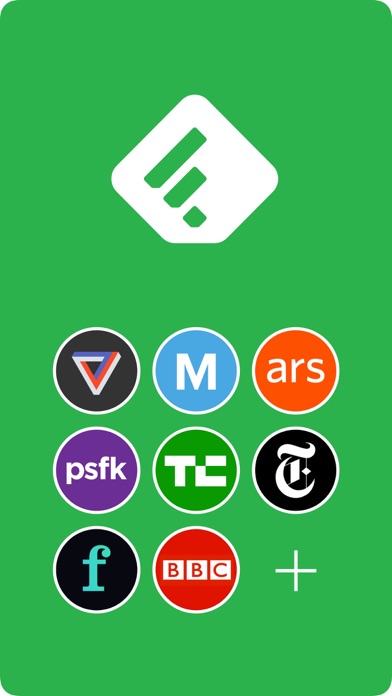Feedly - Smart News Reader: Comprehensive iOS App Review
by Feedly Inc.
Feedly organizes diverse content sources into a unified feed, using AI filtering to reduce information overload. Targets professionals and researchers needing curated industry updates.
Detailed Review
Feedly positions itself as an intelligent content aggregation platform that consolidates disparate information sources into a streamlined reading experience. The application serves users seeking to monitor industry developments, research topics, or personal interests without navigating multiple websites or platforms individually. Its core proposition centers on algorithmic content prioritization and organizational tools that adapt to user preferences over time.
The application's functionality spans multiple content types including traditional publications, blogs, academic journals, YouTube channels, podcasts, and Reddit threads. Users can create custom feeds organized by topic, source, or project, with options for both broad categorization and granular filtering. The AI-powered 'Leo' assistant provides additional curation through priority highlighting, newsletter summarization, and trend detection. Integration capabilities include read-later services, note-taking applications, and team collaboration tools through Feedly's enterprise offerings.
User experience demonstrates thoughtful design with a three-panel interface featuring source navigation, article previews, and reading view. The interface maintains consistency across iOS devices with responsive touch controls and system-native gestures. Real-world usage patterns show professionals typically spending 15-30 minutes daily scanning prioritized updates, with researchers employing saved searches and topic alerts for ongoing projects. The reading experience offers multiple view modes including full-text extraction that bypasses website clutter.
With no specific user reviews available for analysis, the application's 4.6/5 App Store rating suggests generally positive reception. Typical feedback patterns from similar aggregation tools indicate users value centralized access but occasionally critique algorithm accuracy in content prioritization. Historical reviews of Feedly's platform frequently mention appreciation for its cross-platform synchronization but note occasional performance variations between mobile and desktop experiences.
The application excels at reducing information fragmentation and providing customizable filtering options, though some users may find the learning curve for advanced features initially steep. Its strength lies in serving knowledge workers who require ongoing monitoring of multiple information streams, while casual users might prefer simpler news applications. Optimal use cases include market researchers tracking industry developments, academics following journal publications, and professionals maintaining competitive intelligence feeds.
Key Features
- •Unified content aggregation from newspapers, blogs, journals, YouTube, podcasts and Reddit in single dashboard interface
- •AI-powered Leo assistant prioritizes relevant content using machine learning based on reading history and preferences
- •Customizable organizational system with boards, feeds, and tags for project-based content management
- •Full-text extraction cleans article viewing by removing ads and webpage clutter for focused reading
- •Integration capabilities with productivity tools including Pocket, Evernote, and team collaboration platforms
- •Trend tracking and keyword alerts notify users about emerging topics across followed sources
Why Users Love It
Comprehensive source integration
Effective noise reduction
Perfect for: Professionals and researchers monitoring multiple information streams
Screenshots






App Details
Developer
Feedly Inc.
Platform
iosRating
★4.6
Last Updated
9/7/2025
Other Strategy Games Apps
X-Clash: Survival Challenge
9z Games(HK)
IOS 4.5
#15Tower War - Tactical Conquest
SayGames LTD
IOS 4.6
#17State Connect: Traffic Control
AI Games FZ
IOS 4.4
#18Atmosphere Trivia
Rarefied Atmosphere, Inc.
IOS 4.8
#19Idle Guy: Life Simulator games
Heatherglade Publishing Kft
IOS 4.8
#19Cooking Fever: Restaurant Game
Nordcurrent UAB
IOS 4.5
#20